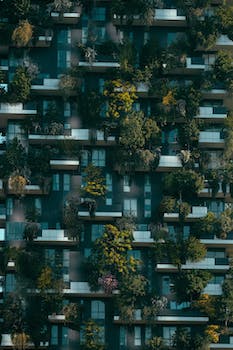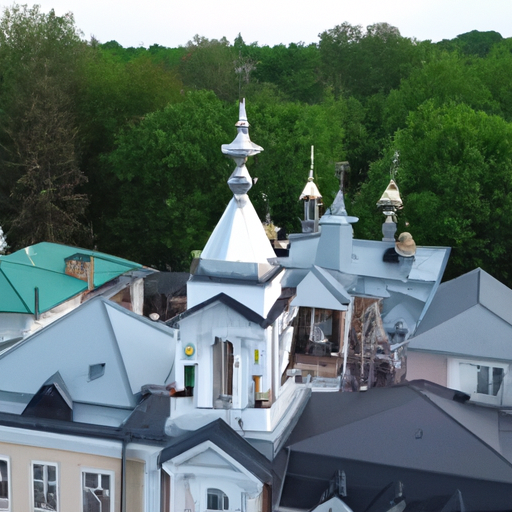Achieving Aesthetic Harmony: The Role of Design Consistency in Modern Complexes
Design consistency is a crucial aspect of modern complexes, as it plays a significant role in achieving aesthetic harmony and creating a sense of unity within the built environment. In today’s fast-paced world, where architectural styles and trends are constantly evolving, maintaining a consistent design language across a complex can be a challenging task. However, it is essential to ensure that the various elements of a complex, such as buildings, landscapes, and public spaces, work together to create a cohesive and visually appealing whole.
One of the primary reasons why design consistency is important in modern complexes is that it helps to establish a strong identity and sense of place. A well-designed complex with a consistent design language can become a landmark in its own right, attracting visitors and contributing to the overall image of the surrounding area. This is particularly important in urban environments, where competition for attention and recognition is fierce. By creating a visually cohesive complex, architects and designers can help to differentiate their projects from the surrounding buildings and create a memorable experience for visitors.
Design consistency also plays a crucial role in ensuring the functionality and usability of a complex. When the various elements of a complex are designed with a consistent language and style, it becomes easier for users to navigate and understand the space. This is particularly important in large-scale projects, such as mixed-use developments and transportation hubs, where users need to be able to quickly and easily find their way around. By maintaining a consistent design language throughout the complex, architects and designers can help to create a more intuitive and user-friendly environment.
In addition to its functional benefits, design consistency can also contribute to the overall aesthetic harmony of a complex. When the various elements of a complex are designed with a consistent style and language, they work together to create a visually cohesive whole. This can help to create a more pleasant and enjoyable environment for users, as well as contributing to the overall success of the project. A well-designed complex with a consistent design language can become a beautiful and inspiring space, where people want to spend time and engage with their surroundings.
Achieving design consistency in modern complexes requires a collaborative approach, with architects, designers, and other stakeholders working together to ensure that the various elements of the project are designed with a consistent language and style. This can involve the use of shared design guidelines, which outline the key principles and elements that should be incorporated into the design of the complex. These guidelines can help to ensure that the various elements of the project work together to create a cohesive and visually appealing whole.
In conclusion, design consistency is a crucial aspect of modern complexes, as it plays a significant role in achieving aesthetic harmony and creating a sense of unity within the built environment. By maintaining a consistent design language throughout a complex, architects and designers can help to establish a strong identity and sense of place, ensure the functionality and usability of the space, and contribute to the overall aesthetic harmony of the project. As architectural styles and trends continue to evolve, it is essential that designers and architects prioritize design consistency in their projects, in order to create visually cohesive and inspiring spaces that stand the test of time.
Balancing Functionality and Style: The Significance of Consistent Design in Contemporary Developments

Design consistency is a crucial aspect of modern complexes, as it plays a significant role in balancing functionality and style. Contemporary developments, such as residential buildings, commercial spaces, and mixed-use properties, require a harmonious blend of aesthetics and practicality to cater to the diverse needs of their occupants. This article delves into the importance of design consistency in modern complexes and how it contributes to the overall success of these developments.
In the realm of architecture and interior design, consistency refers to the uniformity and coherence of various design elements, such as color schemes, materials, textures, and patterns. A consistent design ensures that all components of a space work together seamlessly, creating a unified and visually appealing environment. This is particularly important in modern complexes, where multiple spaces and functions coexist within a single development.
One of the primary reasons why design consistency is essential in contemporary developments is that it helps establish a strong identity and sense of place. A well-designed complex with a consistent theme and style can create a memorable impression on its occupants and visitors, setting it apart from other developments in the area. This can be especially beneficial for commercial properties, as a distinctive and cohesive design can help attract customers and boost brand recognition.
Moreover, design consistency plays a vital role in enhancing the overall functionality of a complex. When all design elements work together harmoniously, it becomes easier for occupants to navigate and utilize the space efficiently. For instance, consistent signage and wayfinding systems can help people find their way around a large complex, while a uniform layout and design of common areas can facilitate smooth movement and interaction among occupants. This is particularly important in mixed-use developments, where residential, commercial, and public spaces need to coexist seamlessly.
In addition to improving functionality, design consistency can also contribute to the well-being and satisfaction of occupants. A well-designed and cohesive environment can have a positive impact on people’s mood and productivity, as it creates a sense of order and balance. This is especially relevant in residential complexes, where a consistent design can help create a sense of community and belonging among residents. Furthermore, a harmonious design can also enhance the overall aesthetic appeal of a complex, making it more attractive to potential buyers or tenants.
Design consistency is also crucial in ensuring the long-term sustainability and adaptability of modern complexes. A consistent design approach can help create a flexible and future-proof environment that can easily accommodate changes in technology, demographics, and market trends. For example, a uniform and modular design can allow for easy reconfiguration and expansion of spaces, while a consistent use of materials and finishes can facilitate maintenance and repairs.
In conclusion, design consistency is a critical aspect of modern complexes that should not be overlooked. It plays a significant role in balancing functionality and style, ensuring that contemporary developments cater to the diverse needs of their occupants while creating a strong identity and sense of place. By adopting a consistent design approach, architects and designers can create visually appealing, functional, and sustainable environments that contribute to the overall success of modern complexes. As the world continues to evolve and urbanize, the importance of design consistency in contemporary developments will only continue to grow.
Unifying Diverse Spaces: How Design Consistency Enhances User Experience in Modern Complexes
Design consistency is a crucial aspect of modern architectural and interior design, particularly in large, multi-use complexes. These complexes often house a diverse range of spaces, from residential and commercial units to recreational and public areas. As such, it is essential to create a cohesive and unified design language that enhances the user experience and ensures seamless transitions between different spaces. This article will explore the importance of design consistency in modern complexes and how it contributes to a more enjoyable and functional environment for users.
One of the primary reasons for maintaining design consistency in modern complexes is to create a sense of unity and harmony throughout the entire development. This is particularly important in large-scale projects, where multiple buildings and spaces are interconnected. A consistent design language helps to create a cohesive visual identity that is easily recognizable and memorable. This not only contributes to the overall aesthetic appeal of the complex but also helps users navigate the space more efficiently.
Design consistency also plays a significant role in establishing a strong brand identity for the complex. In today’s competitive real estate market, it is essential for developers to differentiate their projects from others and create a unique selling proposition. A well-executed design strategy that maintains consistency across all spaces can help achieve this goal. It communicates a clear message about the quality, style, and values of the development, making it more attractive to potential buyers and tenants.
Moreover, design consistency can greatly enhance the user experience in modern complexes. When users encounter a familiar design language throughout the complex, it creates a sense of comfort and familiarity. This is particularly important in mixed-use developments, where residents, workers, and visitors may have different needs and expectations. A consistent design approach can help cater to these diverse requirements by creating a seamless transition between various spaces, such as residential units, offices, retail outlets, and public areas.
In addition to improving the overall user experience, design consistency can also contribute to the functionality and efficiency of modern complexes. For instance, consistent use of materials, colors, and finishes can help reduce maintenance costs and ensure the longevity of the development. Similarly, a unified design language can facilitate wayfinding and navigation, making it easier for users to locate amenities and services within the complex.
Furthermore, design consistency can also have a positive impact on the sustainability of modern complexes. By adopting a consistent approach to materials, construction techniques, and energy-efficient systems, developers can minimize the environmental footprint of their projects. This not only benefits the environment but also enhances the long-term value and appeal of the complex.
In conclusion, design consistency is an essential aspect of modern complex design that should not be overlooked. It plays a crucial role in creating a unified and harmonious environment that enhances the user experience, establishes a strong brand identity, and contributes to the functionality and sustainability of the development. As such, architects, designers, and developers must prioritize design consistency in their projects to ensure the success and longevity of modern complexes. By doing so, they can create spaces that are not only visually appealing but also functional, efficient, and enjoyable for users.
Q&A
Question 1: Why is design consistency important in modern complexes?
Answer: Design consistency is important in modern complexes because it ensures a cohesive and harmonious aesthetic, improves functionality and navigation, and enhances the overall user experience for occupants and visitors.
Question 2: How does design consistency contribute to the functionality of modern complexes?
Answer: Design consistency contributes to the functionality of modern complexes by providing a unified layout and design elements, making it easier for occupants to navigate and locate amenities, and creating a more efficient use of space.
Question 3: What are some key elements to consider when aiming for design consistency in modern complexes?
Answer: Key elements to consider when aiming for design consistency in modern complexes include maintaining a consistent color scheme, using similar materials and finishes, ensuring uniformity in architectural and interior design styles, and incorporating consistent signage and wayfinding systems.
Conclusion
In conclusion, design consistency in modern complexes is crucial as it enhances user experience, promotes brand identity, ensures seamless functionality, and fosters a sense of harmony and coherence. By maintaining a consistent design approach, architects and designers can create aesthetically pleasing, efficient, and user-friendly spaces that cater to the diverse needs of occupants and visitors, ultimately contributing to the overall success and appeal of modern complexes.


